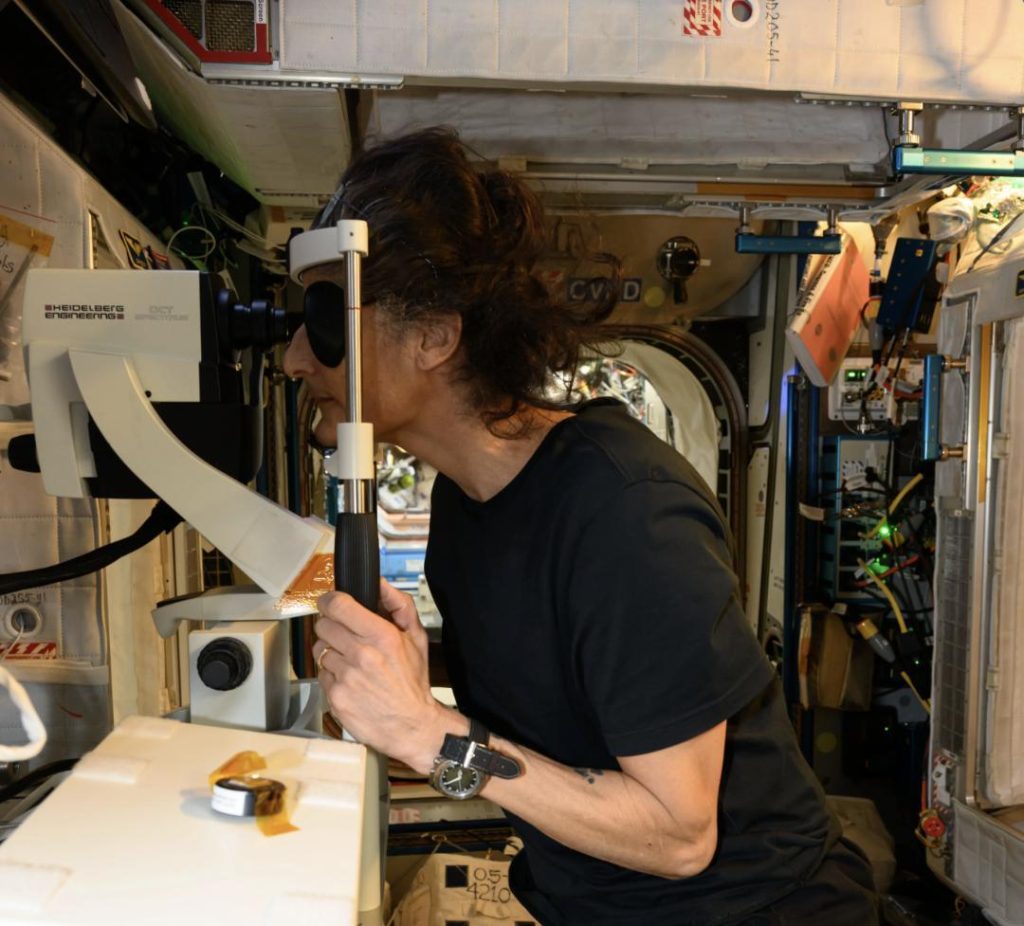
Astronauts Develop Vision Problems During Long Spaceflights: Study
As humans continue to explore the vastness of space, a new challenge has emerged for astronauts embarking on long-duration spaceflights. A recent study by NASA has revealed that astronauts on six-month or longer missions to the International Space Station (ISS) often experience worsening vision, requiring them to wear stronger eyeglasses.
This phenomenon is not a trivial matter, as it can significantly impact an astronaut’s daily life and ability to perform their duties. The study, which was published in the journal Investigative Ophthalmology & Visual Science, suggests that the root cause of this vision problem is microgravity-induced fluid shifts toward the head and increased intracranial pressure.
According to NASA, this condition is known as Space-Associated Neuro-Ocular Syndrome (SANS). The agency is now working to develop countermeasures to combat these fluid shifts, which could potentially mitigate the effects of SANS on astronauts.
The study was conducted by analyzing the vision changes experienced by 16 astronauts who spent six months or longer on the ISS. The results showed that nearly all of the astronauts experienced a decline in their visual acuity, with some requiring stronger eyeglasses than before their spaceflight.
The researchers used a variety of tests to assess the astronauts’ vision, including visual acuity tests, refractive error measurements, and pupil dilation exams. The data collected during the study revealed that the majority of the astronauts experienced changes in their refractive error, which is the degree to which their eyes focus light.
The study’s findings are significant, as they suggest that SANS is a common issue that can affect a significant number of astronauts during long-duration spaceflights. The condition is thought to be caused by the microgravity environment, which can cause fluids in the body to shift toward the head and increase intracranial pressure.
To combat this issue, NASA is now testing various countermeasures, including an experiment called the “Thigh Cuff.” This device uses a compression cuff to restrict blood flow to the legs, which can help to reduce fluid shifts toward the head and alleviate the pressure on the eyes.
The Thigh Cuff experiment is designed to test the effectiveness of this countermeasure in reducing the symptoms of SANS. The experiment involves astronauts wearing the cuff for several hours a day during their spaceflight, with their vision being monitored and tested before and after the experiment.
The study’s findings have significant implications for future long-duration spaceflights. As NASA and other space agencies plan to send astronauts on missions to the Moon and beyond, it is essential that they understand and address the potential risks to astronauts’ vision health.
In addition to the Thigh Cuff experiment, NASA is also exploring other potential countermeasures to mitigate the effects of SANS. These include the use of medications to reduce fluid shifts and the development of new technologies that can help to alleviate pressure on the eyes.
The study’s lead author, Dr. H. Miles, noted that the findings highlight the importance of addressing the potential risks to astronauts’ vision health during long-duration spaceflights. “The vision changes we observed in this study are likely to be a significant issue for astronauts on long-duration missions,” Dr. Miles said. “We are working to develop countermeasures to mitigate these effects and ensure that astronauts can perform their duties safely and effectively.”
As NASA continues to push the boundaries of space exploration, it is essential that the agency prioritizes the health and well-being of its astronauts. The study’s findings highlight the need for further research into the effects of microgravity on the human body and the development of effective countermeasures to mitigate these effects.
Source: https://www.newsbytesapp.com/news/science/nasa-is-studying-vision-problems-during-spaceflights/story






